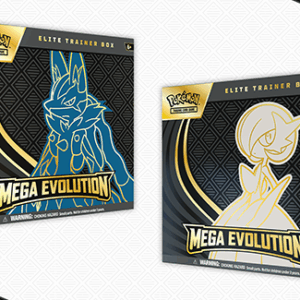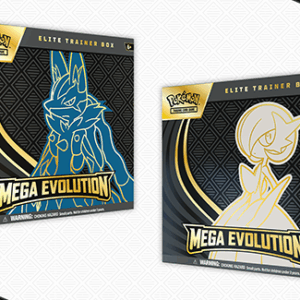Collectors, both seasoned and green, often find their hearts steering them toward the mystique of certain playing cards. One such timeless beacon is the 2003 Topps LeBron James rookie card, number 221, which persistently sits at the helm of the sports card hobby. This card isn’t just another piece in the stock of collectibles; it’s a bridge between two significant eras of trading card history. As you ponder over it, anyone who’s tucked a card into a binder or a shoebox can likely picture it vividly. It represents a pivotal moment, balancing classic paper appeal on one side and the glistening chrome allure on the other. For newbies re-entering what can be an overwhelming scene, it often becomes the piece you pull out with the expert suggestion to “start here.”
While there exists a pantheon of flashier and rarer LeBron rookie cards, the essence of the Topps base card lies not in flamboyance but in foundational significance. It has weathered the waves of time, teaching many collectors the gravitas of owning a cornerstone piece. There is a fair sprinkling of supply to keep the chase grounded within reach, yet the persistent demand ensures pristine copies are snapped up swiftly. Recent activity makes that crystal clear. Observing eBay auctions through mid-August of 2025, we see PSA 10s holding their ground firmly, with closing bids consistently within the oasis of two thousand to two thousand one hundred dollars. Prices knock around within this range like a soothing, steady tick-tock of a grandfather clock, low at two thousand on August 6 and peaking as high as two thousand one hundred seventy-five on August 18. This constancy isn’t something seen every day for a card with such visibility.
Taking a step back, we see a market that appears reassuringly robust. Data from Card Ladder shows a late-August PSA 10 achieving a price incrementally higher at two thousand five hundred thirty-one dollars. This hovers just beyond typical eBay finishes and resonates with the gentle, steadfast incline since spring. It’s a remarkable yet calm demonstration of steady market vibrancy, floating under the wild winds of volatile spikes.
Topps ensured this card wasn’t a lone lighthouse awaiting discovery. The 2003 Topps family includes exclusive members like the Black Border parallel distinguished by its rarity at only five hundred pieces, the Gold infinitely scarcer at ninety-nine, and the First Edition stamp catering to selective collectors with a taste for rarity minus the serialized tiers. These versions, along with the standard, frequently appear in pricing tools and collector checklists.
Moreover, there’s a captivating anomaly in the photo variation from the Topps Collection factory set, known as the quirky cousin with its own distinct image. Despite its unique charm and slightly smaller following, even in gem mint, it usually shadow-walks behind the base card. Yet, it allows set builders an adventurous detour while still remaining on the flagship road.
Grading remains a defining topic in the discussion of collectible cards. A healthy population of PSA 10s gives this card the reputation of a “blue chip” stock rather than elusive treasure, while the difference from PSA 9 to PSA 10 is significant both in financial terms and collector psyche. For those just dipping toes into the water, raw cards lately have been fetching between two hundred fifty to three hundred dollars, while PSA 9s comfortably cruise around four hundred dollars. The quality of these raw cards shifts notably with centering and surface condition, making seller descriptions and feedback nearly as crucial as enthusiastic bidding.
For those who live by comparative analysis, the strategy this month stands clear: monitor late-night eBay auctions for PSA 10s, anticipate the majority to settle around the two thousand-dollar mark, and be braced for competitive sparks when bidders doggedly persist in their desires.
The endless paper versus chrome debate is one that defines this rookie class. Chrome refractors understandably draw the eye, flamboyant in their attractive sheen. However, the Topps paper base card is layered with the richness of nostalgia—it’s the card that made its way into binders, stacks, and retail racks in the mid-2000s. Opting between the two isn’t obligatory, but the paper card tells a deeper narrative of a transitioning hobby, crossing boundaries from one historical chapter into the next. Reputable guides have long advocated for the Topps paper card’s position near the summit of any serious LeBron card list.
Perhaps the most typical quirks collectors notice involve centering. Its white borders make any deviation here glaring, and on the ominous Black Border parallel, every tiny mark screams for attention. This emphasizes the need for sharp corners and honest edges, making a perfect 10 still hit you with a jolt when seen in the wild.
Even with diverse budgets, there are compelling paths to follow. A solid PSA 9 allows you to enjoy that distinctive look at about half the price of a mint gem, while still easy to trade later. Conversely, a handpicked raw for grading provides a rewarding project. Meanwhile, for those inclined towards scarcity, the First Edition offers exclusivity without the Black and Gold label tax. It’s less about pursuing popular trends and more about aligning your preference with a version that connects in your hand.
A unique thrill persists in the potential to pull such a beckoning card afresh. Galaxy Rip Packs occasionally include these 2003 Topps LeBrons, curated for moments of real thrill without devolving into idle daydreams. The combination of evolving possibilities keeps enthusiasts enthralled by the surprise and excitement that come with freshly unearthed treasures.
Thus, the reliable encore of writing this piece in 2025 is backed by the card’s anchored reputation. A skim of the checklist, a review of recent bids, highlights the card’s enduring capability to satisfy a spectrum of collectors. Be it stored away as a keepsake, acquired after shows, or chanced upon through a strategic pack tear, it remains a symbol of dependability, a cardinal point around which basketball card enthusiasts orbit. If broadening your collection leads to its siblings—as numbers rise with the Black and Gold, or the First Edition—you’re still engaging with a constant, gravitational force that ties the hobby together.






